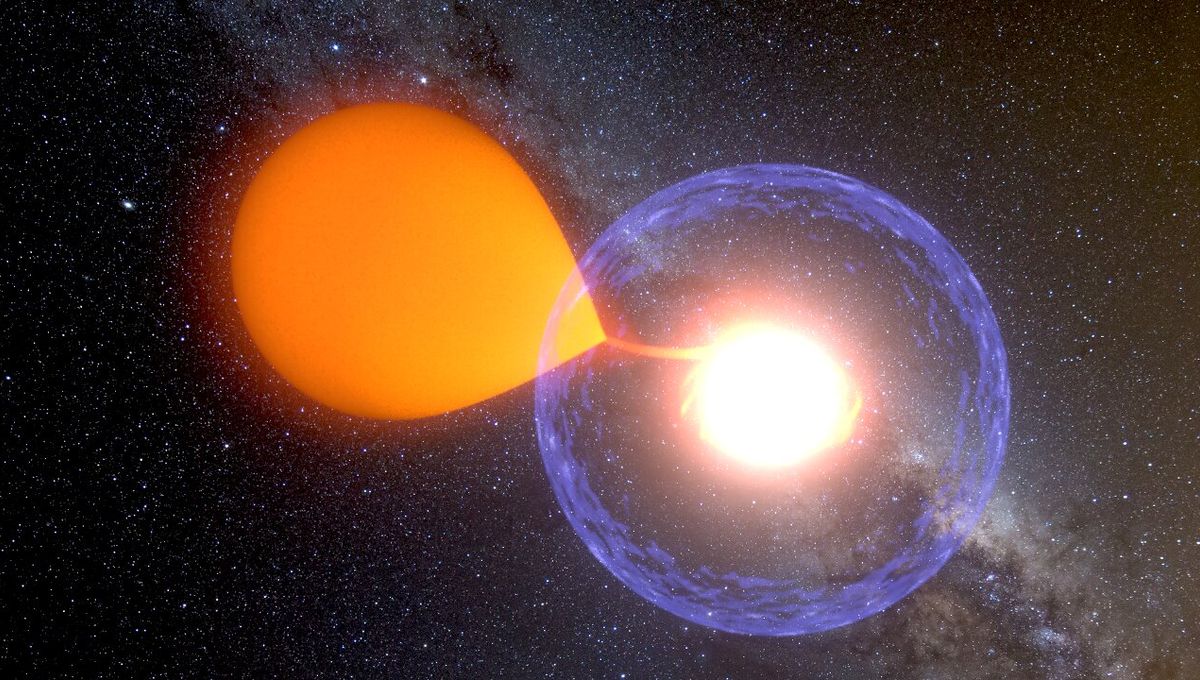
Astronomers have found a new type of stellar phenomenon: stars that for a few months might suddenly get up to 20 times as bright with a temperature of hundreds of thousands of degrees. These objects are being called millinovae and they have never been seen before.
The international team found 29 of these events in the Magellanic Clouds – galaxies that orbit our own, the Milky Way. Using 20 years’ worth of data from the Optical Gravitational Lensing Experiment (OGLE), the team was able to find objects that experienced an increase in brightness periodically and others that only had a one-off.
One object, OGLE-mNOVA-11, began its outburst in November 2023, allowing researchers an intimate study of this event. This was similar to ASASSN-16oh, another transient event seen in 2016. The observations paint a picture of something new: x-ray events of great power but not as bright as better-established ones.
“We believe OGLE-mNOVA-11, ASASSN-16oh, and the other 27 objects form a new class of transient x-ray sources,” lead author Dr Przemek Mróz, from the University of Warsaw, said in a statement. “We have named them millinovae, as their peak brightness is roughly a thousand times lower than that of classical novae.”
Classical novae are temporary brightening seen in a star system. The systems are composed of white dwarfs and a companion, but the white dwarf is a thief. It steals material and, eventually, the material is heated beyond a critical temperature, which ignites nuclear fusion leading to the brightening.
The observations of OGLE-mNOVA-11 suggest that, for a few months, it became an object 100 times brighter than the Sun, reaching a temperature of around 600,000 °C (1 million °F), which was estimated with x-ray observations from the Neil Gehrels Swift Observatory. The visible light also revealed hints of the temperature and the elements present around this object.
“We observed this star with the Southern African Large Telescope (SALT), one of the largest telescopes in the world,” added Dr Mróz. “Its optical spectrum revealed signatures of ionized atoms of helium, carbon, and nitrogen, indicating extremely high temperatures.”
The team has two explanations for the x-ray emission of the millinovae, although its true nature is a mystery. In the first, millinoave are made of thieving white dwarfs too but the x-ray emission might happen when the material is falling onto the white dwarf before it dramatically ignites. Alternatively, it might be just like a classical nova with the material experiencing fusion but not at a violent enough level.
“Some cosmic phenomena produce x-rays naturally,” explained Dr Mróz. “For example, x-rays may be produced by a hot gas falling onto compact objects like white dwarfs, neutron stars, or black holes. X-rays can also be generated by decelerating charged particles, such as electrons.”
A paper describing the results is published in The Astrophysical Journal Letters.
Source Link: Meet The Millinovae: A New Mysterious Class Of Cosmic X-Ray Events